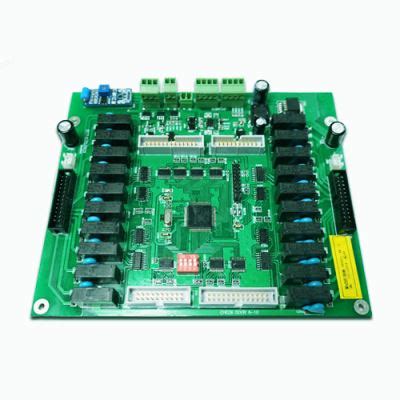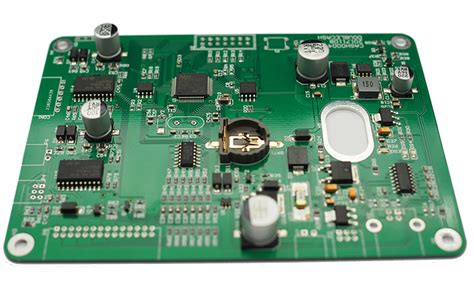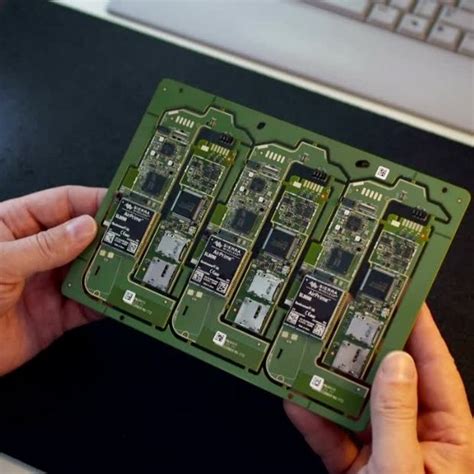Metal core pcb advantages
Enhanced Thermal Management
Metal core printed circuit boards (PCBs) have garnered significant attention in recent years due to their superior thermal management capabilities. These PCBs, which incorporate a metal substrate, typically aluminum or copper, offer a range of advantages that make them particularly suitable for high-power and high-temperature applications.
One of the most notable benefits of metal core PCBs is their enhanced thermal management, which is crucial for maintaining the performance and longevity of electronic components.
To begin with, the metal core in these PCBs acts as a heat sink, efficiently dissipating heat away from critical components. This is particularly important in applications where high power densities are involved, such as in LED lighting, power supplies, and automotive electronics. By effectively managing heat, metal core PCBs help prevent overheating, which can lead to component failure and reduced reliability. Consequently, this improved thermal performance translates to increased operational stability and extended lifespan of the electronic devices.
Moreover, the thermal conductivity of metal core PCBs is significantly higher than that of traditional FR4 PCBs.
This enhanced thermal conductivity ensures that heat is rapidly transferred away from heat-generating components, thereby maintaining optimal operating temperatures. For instance, aluminum, a commonly used metal in these PCBs, has a thermal conductivity of approximately 205 W/mK, which is substantially higher than the 0.3 W/mK of standard FR4 material. This stark difference underscores the superior heat dissipation capabilities of metal core PCBs.
In addition to their high thermal conductivity, metal core PCBs also exhibit excellent mechanical strength and durability.
The metal substrate provides a robust foundation that can withstand mechanical stresses and strains, making these PCBs ideal for use in harsh environments. This durability is particularly beneficial in automotive and industrial applications, where electronic components are often subjected to vibrations, shocks, and extreme temperatures. The resilience of metal core PCBs ensures that they can maintain their structural integrity and functionality under such demanding conditions.
Furthermore, the enhanced thermal management of metal core PCBs contributes to improved electrical performance.
By maintaining lower operating temperatures, these PCBs help reduce the risk of thermal-induced electrical failures, such as short circuits and signal degradation. This is especially critical in high-frequency applications, where even minor temperature fluctuations can adversely affect signal integrity. Therefore, the use of metal core PCBs can lead to more reliable and efficient electronic systems.
Another advantage of metal core PCBs is their ability to support higher power densities.
As electronic devices become increasingly compact and powerful, the need for efficient thermal management becomes more pronounced. Metal core PCBs can accommodate higher power levels without compromising performance, making them an ideal choice for modern electronic designs. This capability is particularly relevant in the context of LED lighting, where high power densities are common, and effective heat dissipation is essential to prevent thermal runaway and ensure consistent light output.
In conclusion, the enhanced thermal management offered by metal core PCBs provides a multitude of benefits that are critical for the performance and reliability of electronic devices. Their superior heat dissipation capabilities, combined with excellent mechanical strength and improved electrical performance, make them an indispensable component in high-power and high-temperature applications. As the demand for more efficient and reliable electronic systems continues to grow, the adoption of metal core PCBs is likely to increase, further solidifying their role in the advancement of modern electronics.
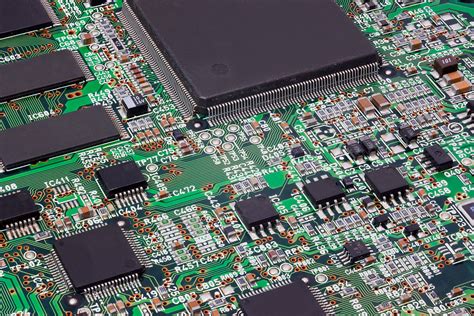
Improved Mechanical Stability
Metal core printed circuit boards (PCBs) offer a range of advantages, particularly in terms of improved mechanical stability. This enhanced stability is a critical factor in various applications, especially those that demand high reliability and durability.
One of the primary reasons for the superior mechanical stability of metal core PCBs is the inherent strength of the metal substrate. Unlike traditional fiberglass or epoxy-based PCBs, metal core PCBs utilize a metal layer, typically aluminum or copper, which provides a robust foundation. This metal layer significantly reduces the risk of warping, bending, or cracking, even under extreme conditions.
Furthermore, the metal core acts as a heat sink, efficiently dissipating heat away from critical components.
This thermal management capability not only prevents overheating but also contributes to the overall mechanical stability of the PCB. By maintaining a lower and more consistent temperature, the metal core reduces thermal expansion and contraction, which can otherwise lead to mechanical stress and potential failure of the board. Consequently, metal core PCBs are particularly well-suited for high-power applications, such as LED lighting, automotive electronics, and power supplies, where effective heat dissipation is crucial.
In addition to thermal management, the metal core provides a solid base that enhances the structural integrity of the PCB.
This is particularly beneficial in environments subject to mechanical vibrations or shocks. For instance, in automotive or aerospace applications, where components are frequently exposed to harsh conditions, the mechanical stability of metal core PCBs ensures reliable performance and longevity. The metal substrate absorbs and distributes mechanical stresses more evenly, reducing the likelihood of damage to the PCB and its components.
Moreover, the improved mechanical stability of metal core PCBs translates to better performance in terms of electrical conductivity and signal integrity.
The metal layer provides a low-resistance path for electrical currents, minimizing signal loss and ensuring efficient power distribution. This is especially important in high-frequency applications, where signal integrity is paramount. The stable structure of the metal core PCB minimizes the risk of micro-cracks or delamination, which can adversely affect electrical performance.
Another advantage of metal core PCBs is their ability to support heavier components without compromising structural integrity.
Traditional PCBs may struggle to maintain stability when populated with large or heavy components, leading to potential issues such as solder joint failure or board deformation. In contrast, the robust metal core of these PCBs provides a sturdy platform that can easily support heavier components, ensuring reliable connections and reducing the risk of mechanical failure.
Additionally, the manufacturing process of metal core PCBs contributes to their mechanical stability.
The metal substrate is typically bonded to the dielectric layer using high-temperature lamination processes, resulting in a strong and durable bond. This manufacturing technique ensures that the layers remain securely attached, even under mechanical stress or thermal cycling. The result is a PCB that maintains its structural integrity over time, providing consistent performance and reliability.
In conclusion, the improved mechanical stability of metal core PCBs offers numerous advantages, making them an ideal choice for applications requiring high reliability and durability. The inherent strength of the metal substrate, combined with efficient thermal management, enhanced structural integrity, and superior electrical performance, ensures that metal core PCBs can withstand demanding conditions and deliver consistent, reliable performance. Whether in high-power applications, environments subject to mechanical stress, or scenarios requiring robust support for heavy components, metal core PCBs provide a dependable solution that meets the rigorous demands of modern electronic systems.
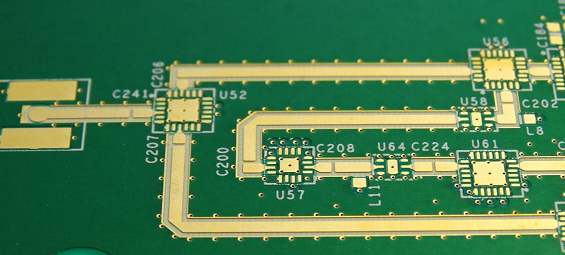
Superior Electrical Performance
Metal core printed circuit boards (PCBs) offer a range of advantages, particularly in terms of superior electrical performance. These benefits stem from the unique construction of metal core PCBs, which typically incorporate a metal substrate, such as aluminum or copper, to enhance thermal conductivity and electrical performance. This construction method provides several key advantages over traditional fiberglass-based PCBs, making metal core PCBs an attractive option for various high-performance applications.
One of the primary advantages of metal core PCBs is their exceptional thermal management capabilities.
The metal substrate acts as a heat sink, efficiently dissipating heat away from critical components. This is particularly important in high-power applications where excessive heat can lead to component failure or reduced performance. By maintaining lower operating temperatures, metal core PCBs help to extend the lifespan of electronic components and improve overall system reliability. This thermal efficiency is crucial in industries such as automotive, aerospace, and LED lighting, where maintaining optimal operating temperatures is essential for performance and safety.
In addition to superior thermal management, metal core PCBs also offer enhanced electrical performance.
The metal substrate provides a stable and low-impedance path for electrical signals, reducing signal loss and improving signal integrity. This is particularly beneficial in high-frequency applications where signal integrity is paramount. The reduced impedance also helps to minimize electromagnetic interference (EMI), which can be a significant issue in densely packed electronic systems. By mitigating EMI, metal core PCBs contribute to cleaner signal transmission and improved overall system performance.
Furthermore, the mechanical robustness of metal core PCBs is another notable advantage.
The metal substrate provides a sturdy foundation that enhances the structural integrity of the PCB, making it more resistant to mechanical stress and vibration. This is particularly advantageous in applications where the PCB is subjected to harsh environmental conditions or mechanical shock. The increased durability of metal core PCBs ensures that they can withstand demanding operating environments, thereby reducing the risk of failure and the need for frequent maintenance or replacement.
Moreover, metal core PCBs offer improved dimensional stability compared to traditional PCBs.
The metal substrate exhibits lower thermal expansion coefficients, which means that the PCB is less likely to warp or deform under temperature fluctuations. This stability is crucial in applications where precise alignment and consistent performance are required. By maintaining their shape and integrity, metal core PCBs ensure reliable and consistent electrical performance, even in challenging conditions.
Additionally, the use of metal core PCBs can lead to more compact and efficient designs.
The superior thermal management capabilities allow for higher component densities without the risk of overheating. This enables designers to create more compact and lightweight electronic systems, which is particularly beneficial in applications where space and weight are critical factors. The ability to integrate more components into a smaller footprint can lead to cost savings and improved performance, making metal core PCBs an attractive option for a wide range of applications.
In conclusion, metal core PCBs offer a multitude of advantages in terms of superior electrical performance. Their exceptional thermal management capabilities, enhanced electrical performance, mechanical robustness, improved dimensional stability, and potential for more compact designs make them a preferred choice for high-performance applications. As technology continues to advance and the demand for reliable and efficient electronic systems grows, the benefits of metal core PCBs are likely to become even more pronounced, solidifying their position as a key component in the future of electronics.

Increased Durability and Longevity
Metal core printed circuit boards (PCBs) have garnered significant attention in recent years due to their enhanced durability and longevity, which make them an ideal choice for a variety of demanding applications. Unlike traditional PCBs, which are typically made from materials such as fiberglass or epoxy, metal core PCBs incorporate a metal substrate, usually aluminum or copper, that provides superior thermal conductivity and mechanical strength. This fundamental difference in construction offers several advantages that contribute to the increased durability and longevity of metal core PCBs.
One of the primary benefits of metal core PCBs is their exceptional thermal management capabilities.
The metal substrate acts as a heat sink, efficiently dissipating heat away from critical components. This is particularly important in high-power applications where excessive heat can lead to component failure and reduced lifespan. By maintaining lower operating temperatures, metal core PCBs help to ensure that electronic components function within their optimal temperature range, thereby extending their operational life. Furthermore, the improved thermal performance reduces the risk of thermal cycling, which can cause solder joints to crack and lead to circuit failure over time.
In addition to superior thermal management, metal core PCBs also offer enhanced mechanical stability.
The metal substrate provides a robust foundation that can withstand mechanical stresses and vibrations better than traditional PCB materials. This makes metal core PCBs particularly well-suited for use in environments where mechanical reliability is critical, such as in automotive, aerospace, and industrial applications. The increased mechanical strength not only helps to prevent physical damage to the PCB itself but also protects the delicate electronic components mounted on it, further contributing to the overall longevity of the device.
Moreover, metal core PCBs exhibit excellent dimensional stability, which is crucial for maintaining the integrity of the circuit layout over time.
Traditional PCBs can experience warping or deformation due to thermal expansion and contraction, especially in high-temperature environments. In contrast, the metal substrate in metal core PCBs minimizes these effects, ensuring that the PCB retains its shape and functionality even under extreme conditions. This stability is essential for applications that require precise and reliable performance, as any deviation in the circuit layout can lead to malfunction or failure.
Another factor that enhances the durability and longevity of metal core PCBs is their resistance to environmental factors such as moisture and chemical exposure.
The metal substrate provides a barrier that protects the PCB from environmental contaminants, which can cause corrosion and degradation of the circuit over time. This resistance to environmental stressors makes metal core PCBs an excellent choice for outdoor and harsh environment applications, where traditional PCBs might fail prematurely.
Furthermore, the use of metal core PCBs can lead to cost savings in the long run.
Although the initial cost of metal core PCBs may be higher than that of traditional PCBs, their extended lifespan and reduced maintenance requirements can result in lower overall costs. The increased reliability and reduced risk of failure mean that devices incorporating metal core PCBs are less likely to require frequent repairs or replacements, thereby reducing downtime and associated costs.
In conclusion, the increased durability and longevity of metal core PCBs stem from their superior thermal management, enhanced mechanical stability, excellent dimensional stability, and resistance to environmental factors. These attributes make metal core PCBs a highly reliable and cost-effective solution for a wide range of applications, particularly those that demand high performance and long-term reliability. As technology continues to advance, the adoption of metal core PCBs is likely to grow, driven by the need for robust and durable electronic solutions.


